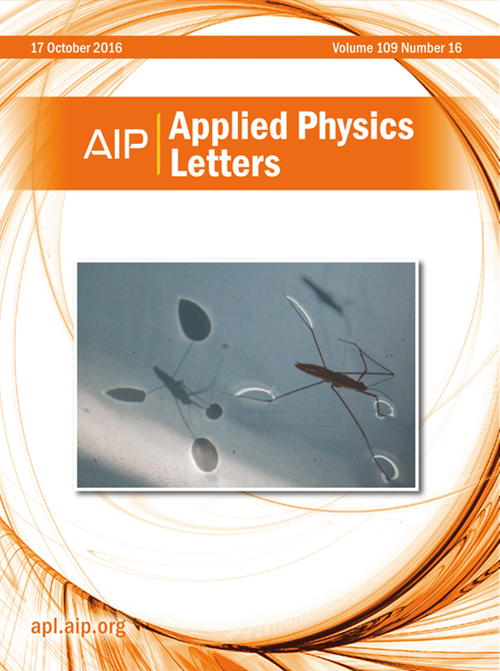Enhanced polarization locking in VCSELs
IF 3.5
2区 物理与天体物理
Q2 PHYSICS, APPLIED
引用次数: 0
Abstract
While optical injection locking (OIL) of vertical-cavity surface-emitting lasers (VCSELs) has been widely studied in the past, the polarization dynamics of OIL have received far less attention. Recent studies suggest that polarization locking via OIL could enable novel computational applications such as polarization-encoded Ising computers. However, the inherent polarization preference and limited polarization switchability of VCSELs hinder their use for such purposes. To address these challenges, we fabricate VCSELs with tailored oxide aperture designs and combine these with bias current tuning to study the overall impact on polarization locking. Experimental results demonstrate that this approach reduces the required injection power (to as low as 3.6 μW) and expands the locking range. To investigate the impact of the approach, the spin-flip model is used to analyze the effects of amplitude anisotropy and bias current on polarization locking, demonstrating strong coherence with experimental results.VCSELs中增强的极化锁定
垂直腔面发射激光器(VCSELs)的光注入锁定(OIL)在过去得到了广泛的研究,但其偏振动力学却很少受到关注。最近的研究表明,通过OIL进行极化锁定可以实现新的计算应用,例如极化编码的Ising计算机。然而,vcsel固有的极化偏好和有限的极化可切换性阻碍了它们的应用。为了解决这些挑战,我们制造了具有定制氧化物孔径设计的vcsel,并将其与偏置电流调谐相结合,以研究对极化锁定的总体影响。实验结果表明,该方法降低了所需的注入功率(低至3.6 μW),并扩大了锁定范围。为了研究该方法的影响,利用自旋翻转模型分析了振幅各向异性和偏置电流对偏振锁定的影响,结果与实验结果具有较强的一致性。
本文章由计算机程序翻译,如有差异,请以英文原文为准。
求助全文
约1分钟内获得全文
求助全文
来源期刊

Applied Physics Letters
物理-物理:应用
CiteScore
6.40
自引率
10.00%
发文量
1821
审稿时长
1.6 months
期刊介绍:
Applied Physics Letters (APL) features concise, up-to-date reports on significant new findings in applied physics. Emphasizing rapid dissemination of key data and new physical insights, APL offers prompt publication of new experimental and theoretical papers reporting applications of physics phenomena to all branches of science, engineering, and modern technology.
In addition to regular articles, the journal also publishes invited Fast Track, Perspectives, and in-depth Editorials which report on cutting-edge areas in applied physics.
APL Perspectives are forward-looking invited letters which highlight recent developments or discoveries. Emphasis is placed on very recent developments, potentially disruptive technologies, open questions and possible solutions. They also include a mini-roadmap detailing where the community should direct efforts in order for the phenomena to be viable for application and the challenges associated with meeting that performance threshold. Perspectives are characterized by personal viewpoints and opinions of recognized experts in the field.
Fast Track articles are invited original research articles that report results that are particularly novel and important or provide a significant advancement in an emerging field. Because of the urgency and scientific importance of the work, the peer review process is accelerated. If, during the review process, it becomes apparent that the paper does not meet the Fast Track criterion, it is returned to a normal track.
 求助内容:
求助内容: 应助结果提醒方式:
应助结果提醒方式:


